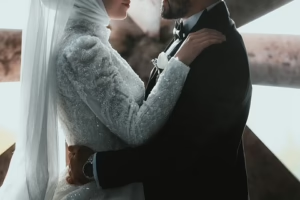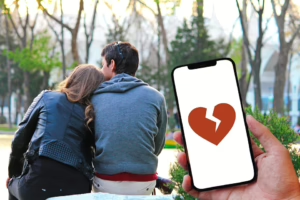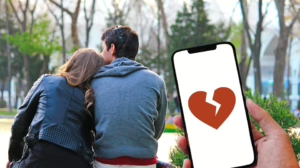From Friendship to Romance: Navigating the Transition
Introduction
The journey from friendship to romance is one of the most complex emotional experiences individuals face. While friendships are built on mutual trust, respect, and understanding, the transition to a romantic relationship introduces different dynamics, expectations, and challenges. This article explores the nuances of moving from friendship to romance, examining the underlying emotions, social implications, and practical strategies to navigate this often-treacherous journey.
Understanding the Nature of Friendship
Friendship serves as a foundational relationship that often precedes romantic attachments. It is characterized by a deep sense of companionship and mutual support. According to social psychologists, friendships can fulfill various emotional and psychological needs, such as companionship, intimacy, and emotional security[^1]. However, the qualities that make a friendship strong can also complicate the transition to a romantic relationship.
Emotional Connection
Friendships develop emotional bonds that may be more complex than those found in romantic relationships initially. In many cases, friends have shared experiences, memories, and a level of comfort that can create a fertile ground for deeper feelings to blossom. This emotional connection is crucial for any romantic relationship, making the transition smoother in some respects.
Social Circles and External Influence
Social circles often play a significant role in the transition from friendship to romance. Friends and family may have opinions about the appropriateness of a relationship between two individuals who start as friends. These external influences can either serve as support or add pressure, complicating emotions and decisions[^2].
The Pressure of Expectations
As feelings evolve from platonic to romantic, the expectations of both parties may change. The question arises: should one remain committed to the friendship or take the risk of pursuing a romantic relationship? This dilemma can create tension and uncertainty in the relationship, potentially leading to awkwardness, misunderstandings, or even the dissolution of the friendship if not handled carefully[^3].
Recognizing Signs of Attraction
Before initiating a conversation about transitioning from friendship to romance, it is essential to recognize signs of mutual attraction. Being able to identify these cues can help avoid unnecessary risks. Here are some common signs:
Increased Physical Contact
One of the most telling signs of attraction is the increase in physical touch. Casual touches, such as hand-holding or playful nudges, may indicate that both parties are open to exploring a romantic relationship[^4].
Intimate Conversations
As feelings develop, conversations may naturally shift from surface-level topics to more personal subjects. Sharing dreams, fears, and vulnerabilities can create a deeper emotional connection that often precedes romantic interest[^5].
Jealousy
If one friend starts to feel jealous when the other spends time with potential romantic interests, this may indicate underlying feelings that go beyond friendship. Jealousy can serve as an alarm bell, signifying that the emotional investment may be more significant than initially thought[^6].
The Importance of Communication
Once signs of mutual attraction have been recognized, effective communication becomes paramount. Open, honest dialogue can help manage expectations and clarify feelings, thus avoiding potential misunderstandings.
Timing and Honesty
Choosing the right time and place for a conversation about transitioning from friendship to romance is crucial. It is essential to approach the subject when both parties are in a comfortable environment, allowing for deeper discussions without distractions. Honesty about feelings and intentions can clarify any confusion[^7].
Mutual Agreement
It’s also vital to gauge the other party’s feelings before jumping into a romantic relationship. As with any relationship, the foundation should be built on mutual consent and understanding. Engaging in conversations about feelings can act as a litmus test for the relationship’s future[^8].
Navigating Friend Group Dynamics
Transitioning from friendship to romance can impact not just the two individuals involved but also their broader social circles. Navigating these friend group dynamics is essential to maintaining friendships while exploring a romantic relationship.
Addressing Concerns from Friends
If friends express concerns about the relationship, it is crucial to address these issues openly. Engaging with mutual friends can reassure them that the friendship will remain intact, even as a romantic relationship develops[^9]. Open discussions can alleviate any fears and ensure mutual support within the friend group.
Set Boundaries
Establishing clear boundaries within the friend group is vital during this transition. These boundaries serve to delineate the evolving relationship while maintaining the existing friendships intact. For example, the couple may choose to limit public displays of affection in group settings until they feel more secure as a pair[^10].
The Risks Involved
While the prospect of evolving from friendship to romance can be exciting, it also carries inherent risks. Addressing these risks openly can help both parties prepare for potential outcomes.
Fear of Losing the Friendship
One of the most significant risks of transitioning from friendship to romance is the fear of losing the friendship if the romantic relationship does not work out. This apprehension can create anxiety for both parties, potentially stifling the development of deeper feelings[^11]. Engaging in conversations about this fear can help both individuals address it openly.
Misaligned Goals and Expectations
Sometimes, one person may view the relationship as a fleeting romantic venture, while the other envisions a long-term commitment. Misaligned goals can create discord within the relationship, as one party may feel neglected or unappreciated if expectations are not synchronized[^12].
Managing Emotional Turbulence
If the romantic relationship does not progress as hoped, emotions can run high, leading to potential conflicts or misunderstandings. Being prepared to handle these emotional fluctuations can prevent long-term damage to the relationship[^13].
Building a Romantic Relationship
As the transition progresses, developing the romantic relationship into something more profound is essential. This stage involves nurturing the relationship, deepening emotional bonds, and establishing a healthy dynamic.
Date Night Strategies
One way to cultivate a romantic relationship is by incorporating regular date nights. These outings can help explorations of affection while allowing both partners to shift from a platonic to a romantic dynamic. Creative, fun dates can deepen the emotional connection and foster intimacy[^14].
Balancing Independence and Togetherness
While it’s essential to spend quality time together, maintaining individual interests and friendships outside the romantic relationship is equally crucial. This balance helps prevent co-dependence, allowing both individuals to grow independently while nurturing their bond[^15].
Continual Communication
As in any relationship, continual communication is key to long-term success. Regular check-ins can help both parties share their feelings, set boundaries, and ensure that they are on the same page. This practice helps build trust and emotional safety, fortifying the romantic relationship[^16].
Conclusion
Transitioning from friendship to romance is a journey that many individuals hope to navigate successfully. While the emotional complexities, social dynamics, and potential risks may create apprehension, understanding the underlying dynamics can empower individuals to embark on this journey with confidence. By nurturing open communication, managing expectations, and prioritizing mutual respect, the transition can lead to a fulfilling romantic relationship that builds on the strong foundation of friendship.


























Add Comment